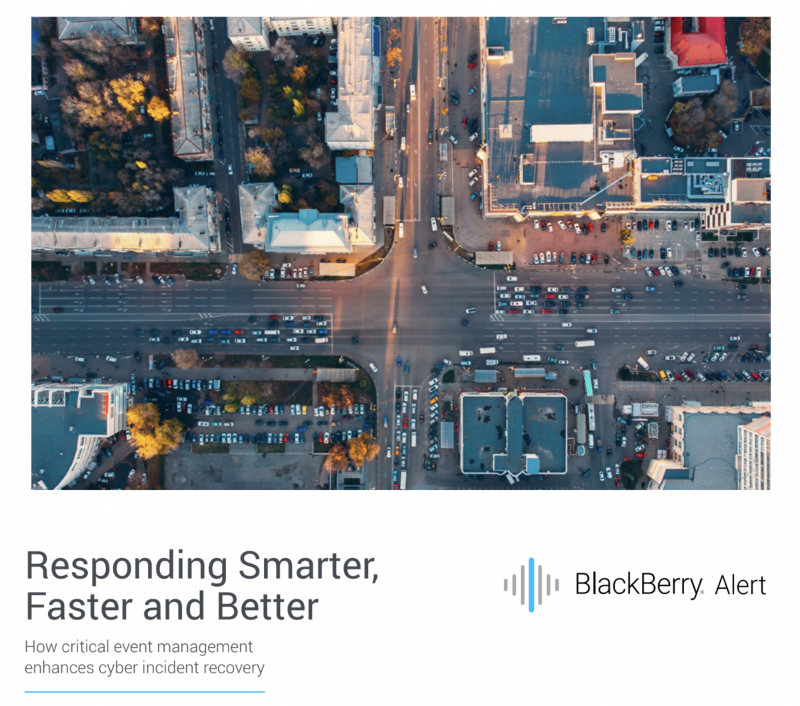How critical event management enhances cyber incident recovery
Published on 20 Aug 2022

The pressures on security chiefs are at their highest point in recent memory. More complex systems, the acceleration of the transition to the cloud, the move to remote labor, and increasingly sophisticated external threats have produced the perfect storm.
Effectively responding to large catastrophes involves more than just human skill, thoroughness, and manual methods. Every second wasted when systems are attacked or shut down, and essential corporate data is inaccessible may have expensive and far-reaching consequences.
Beyond rare worldwide events like as the COVID-19 pandemic – which, according to Microsoft, prompted a 35% increase in the number of cyber attacks – security executives frequently face serious incidents:
- Cybersecurity risks are persistent, developing, and unavoidable - even for the most professional and experienced security teams.
- Cybersecurity risks are persistent, developing, and unavoidable - even for the most professional and experienced security teams.
The conventional, segmented approach to incident response used by the majority of security operations is no longer effective. Numerous businesses use security information and event management (SIEM) systems, often in conjunction with other incident management technologies.
With various systems from different providers and little integration, silos of communication and inefficiency are inevitable. It is hardly surprising that businesses struggle to react to serious security events properly.
Four Reasons Current Cyber Incident Response Is Inadequate
The Tools are not up to the Task.
Traditional cyber incident response technologies and techniques are limited in several ways, including:
1. Inadequate cooperation
The dispersion and even globalization of security personnel hamper incident response. The relevant teams outside of security (such as senior executives, developers, external partners, and customers) struggle to keep informed.
2. A "noisy" alerting environment
The constant flood of blanket notifications may quickly overwhelm security staff.
If alert tiredness develops, vital signals may be disregarded.
3. Ineffective manual procedures
Manual procedures, workflows, and escalation are laborious and time-consuming. Additionally, they might impede data collecting and monitoring.
4. Incorrect or insufficient contact information
A major problem in cyber incident alerting systems is internal and external stakeholders' incomplete or obsolete contact information. Even if it is accurate, information may be difficult to obtain.
Management of Critical Events for Cyber Incident Response
Security executives are abandoning disparate incident response strategies.
They want comprehensive, end-to-end solutions that include:
- Real-time access to aggregated threat data to decrease Mean Time to Detection (MTTD)
- Tools with quick, automated cooperation and communication to decrease Mean Time to Repair (MTTR)
- Vendors with extensive knowledge and skills can integrate technologies beyond incident response (linking cybersecurity consultancy, AI-based endpoint protection, and more) • The ability to preserve a complete audit trail for future process enhancements and accountability.
- A straightforward user interface for operators and end-users
Rather than introducing an additional layer of complexity with a separate solution, the proper critical event management (CEM) platform may unify and complement your current incident response capabilities with the most recent technology.
According to Gartner, the centralization of data from many security products to better threat detection and response, and the automation of repetitive security operations to boost accuracy and efficiency, are two of the most prominent current security developments.
A sophisticated CEM system enables a more rapid and informed event response by combining the following:
- Business system situational monitoring
- Early threat identification
- Automated incident response
- Simplified, real-time targeted or mass alerts
- Improved post-event analysis
A cutting-edge CEM platform is intended to accommodate contemporary realities, such as a dispersed, mobile workforce, more frequent and serious cybersecurity events, and the data explosion.
Download Blackberry's whitepaper to learn more about How critical event management enhances cyber incident recovery only on Whitepapers Online.
